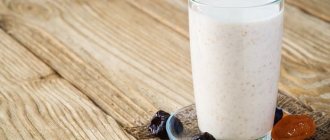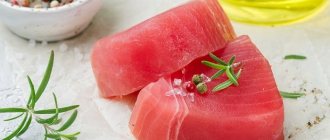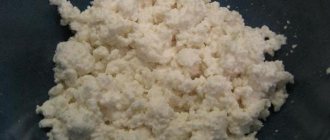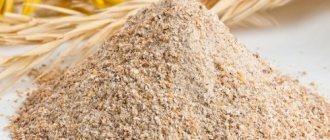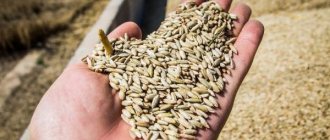Asparagus is a versatile plant that is used for culinary, medicinal and decorative purposes. People have known about the beneficial properties of asparagus since ancient times. In Ancient Egypt, this plant was held in special esteem; images of asparagus were even painted on monuments. Residents of Ancient Rome grew asparagus in their garden plots.
Asparagus can be white or green. White asparagus is especially popular in Germany. It has soft shoots and a more delicate taste. White asparagus has more calories than green asparagus due to its higher sugar content. To make the plant white, its shoots and rosette are completely covered with soil. Without sunlight, asparagus shoots do not photosynthesize. Due to its fairly low calorie content, asparagus has a high dietary value.
How many calories are in asparagus

Asparagus has only 39 calories per 100 grams. Depending on how it was prepared. In any case, asparagus can be classified as a low-calorie product.
Asparagus is very rich in vitamins and microelements, so during diets, any nutritionist will include it in your daily diet.
Asparagus during your diet will provide your body with all the necessary vitamins and microelements.
Calorie content of the product
The calorie content of asparagus depends on the method of preparation and the variety.
Types of Asparagus
Asparagus comes in white, green and purple colors. The white variety is considered the softest. Purple and green ones have the greatest amount of coarse fibers and fiber, which give the vegetable a richer taste.
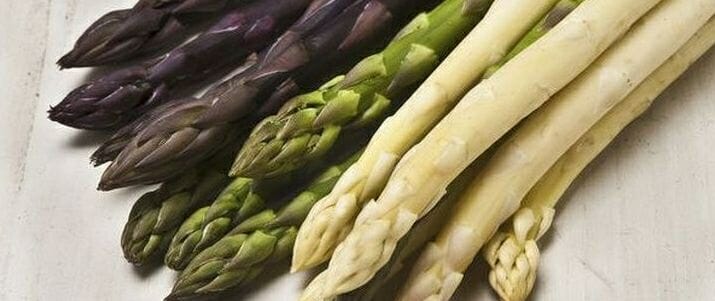
Purple, white and green asparagus
Fresh green and purple asparagus has a calorie content of 24 kcal/100 g. BJU in 100 grams of product:
- fat – 0.1 g;
- proteins – 1.9 g;
- carbohydrates – 3.2 g.
These types of asparagus contain 1.5 g of fiber.
Fresh white asparagus has an energy value of 20 kcal/100 g. BZHU in 100 grams:
- fat – 0.1 g;
- proteins – 2.0 g;
- carbohydrates – 3.1 g.
White asparagus contains 1.5 g of fiber.
Cooking methods
Asparagus can be boiled, steamed and fried. In all of these forms, it can be used in light appetizers, side dishes and soups.
100 g of boiled plant contains 19 kcal, and steamed plant - 20 kcal. The most high-calorie product is the fried product - it contains 75 kcal/100 g. The calorie content of the pickled vegetable is 15 kcal/100 g.
Korean-style asparagus is often used for salads. But the calorie content of this dish is much higher than others - 241 kcal/100 g.
Soy asparagus is a semi-finished product obtained from soybeans that are boiled in soy milk. As a result, a film is formed, which is called soy asparagus. The nutritional value of such a product is much higher - 387 kcal per 100 grams.
Usually soy asparagus is cooked in Korean along with carrots. The calorie content of this dish is 440 kcal/100 g.
Harm of asparagus
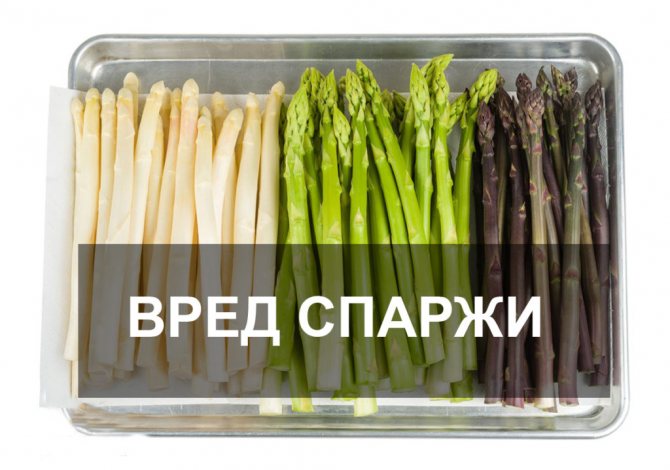
Despite all the positive qualities of this product, asparagus also has negative qualities, like any product. As they say, everything should be in moderation without going overboard.
Asparagus can in rare cases cause allergies. It is also not recommended to use this product if you have a stomach ulcer. Men and women are not recommended to eat asparagus if they have prostatitis and cystitis, respectively.
Fresh
Among consumer species, asparagus is distinguished by the color of its shoots - green, white and purple. Each of them is useful in its own way and has a beneficial effect on the body.
Green
Green asparagus shoots are the most common and affordable, due to the relatively simple method of cultivation and collection. These sprouts are the upper part of plants growing above the ground. They have a rich taste and the highest calorie content among all types of asparagus - 24 kcal/100 g, which is due to the content of more sugars. Although this indicator is also minimal for food products.
Also, green shoots are most saturated with beneficial folic acid, which is extremely important for the normal functioning of the body, primarily the liver. This vitamin lifts your mood, energizes you and is especially necessary for pregnant women, as it reduces the risk of miscarriage.
White
White asparagus shoots are grown in the ground without access to sunlight. They are softer in structure and delicate in taste, therefore they are considered a delicacy that in past centuries was available only to aristocrats. In addition, the very labor-intensive process of growing white asparagus helps to increase the final cost of the product.
The calorie content of white asparagus is the lowest compared to other types and is 20 kcal/100 g. Another difference between white shoots and the rest is the presence of skin, which must be removed before cooking. The main benefit of white asparagus for the body is determined by the presence of a special organic compound - allicin. This useful substance helps lower cholesterol levels, has a beneficial effect on the functioning of the heart, and also kills pathogenic bacteria Helicobacter pylori in the stomach, which corrode its mucosa and are considered the main cause of the development of gastritis, ulcers and malignant lesions of the organ.
Important! Allicin has low thermal stability, that is, it breaks down slowly at room temperature, and instantly when heated (cooking). Therefore, it is advisable to consume white asparagus shoots raw without long-term storage.
The main sources of allicin are onions and garlic. It is this substance, along with some sulfur compounds, also present in asparagus, that causes the smell of urine and sweat to change within literally 15–20 minutes after eating even one shoot, which lasts for about a day. If this is significant, then this point should be taken into account.
Violet
Purple asparagus is a rare type of crop that is also grown in the dark, but with short-term access to ultraviolet light. This technology promotes the formation of special beneficial pigments - anthocyanins, which give the sprouts a purple color. True, during heat treatment it changes to green and takes on the same appearance as the classic version of this product. In addition, these sprouts differ from other color varieties in their slight bitterness in taste, which gives the finished dishes some piquancy.
The calorie content of purple asparagus is the average of all types - 22 kcal/100 g. The beneficial anthocyanins it contains have a beneficial effect on health - they prevent diseases of the urinary system, increase memory and concentration, reduce stress levels and eliminate irritability. Studies have shown that people who regularly consume the purple vegetable have a reduced risk of cancer.
In general, if we talk about taste characteristics, the most common green shoots are no different from the delicious white and rare purple ones. Also, regardless of color, all types of asparagus are powerful antioxidants, have pronounced anti-cancer properties and a number of other beneficial effects:
- reduce blood pressure;
- strengthen contractions and normalize heart rhythm;
- produce a blood purifying and diuretic effect;
- make up for the lack of protein in a vegetarian diet;
- accelerate the process of losing weight due to low calorie content;
- make the diet more complete and balanced;
- saturate the body with valuable substances;
- relieve nervous tension and increase stress resistance.
During the Renaissance, the plant was considered a powerful aphrodisiac, and therefore was prohibited for use by church ministers in order to avoid igniting the “fire of passion.”
The nutritional value of asparagus stems is considered almost optimal. With minimal calorie content, asparagus contains a wide range of various beneficial substances. Although it should be borne in mind that these indicators vary depending on storage conditions and the method of preparation or use of the product.
When included in the diet, young crispy shoots help get rid of excess weight much faster and more comfortable for the body, providing it with the necessary beneficial elements, accelerating the burning of fat deposits, activating metabolism, and providing a tonic effect. Thanks to its diuretic effect, this product helps eliminate excess fluid, waste and toxins.
Contrary to popular belief, the thickness of the shoots does not affect the quality, composition or calorie content of asparagus. All these characteristics directly depend only on their age and freshness. When purchasing such a product, you need to choose elastic stems of even color with small dense tops. The cut areas should not be dried out, the surface should not be wilted, and the tops should not even begin to bloom.
It should be remembered that freshly cut asparagus stems cannot be stored for long periods of time, as they quickly lose their taste and beneficial qualities. They need to be treated like fresh flowers - put in water and periodically change it, updating the cut. This “bouquet” is covered with film and stored in the refrigerator.
You can also purchase frozen shoots, which are available in almost any supermarket, or freeze them yourself. The calorie content of asparagus after freezing remains the same as fresh, and the loss of vitamins and other valuable elements does not exceed 15–20%, which, given the very rich composition of the plant, will not be too noticeable.
What should you include in your diet for weight loss?
Due to its low calorie content, asparagus simply needs to be included in your regular menu. The only exceptions are contraindications for the use of such a valuable product. If you are overweight or have severe cellulite, it is enough to add the vegetable to your diet about three times a week. Moreover, you can choose the cooking method to suit your taste. As a result of such a diet, the “orange peel” will noticeably decrease in the shortest possible time.

The main benefits of asparagus in dietary nutrition are:
- removing toxins and excess fluid from the body;
- replenishing the lack of nutrients with a limited menu;
- stimulation of intestinal function.
The most important condition for a positive result when consuming asparagus is the quality of the raw materials. Fresh vegetables have the following characteristics:
- when you press the cut, the sprout releases fresh juice with a pleasant smell;
- the fiber does not have any external damage or signs of drying out;
- the core of the vegetable is elastic and hard, does not break when bent;
- the ends of the sprout have a closed appearance and no traces of flowering;
- pleasant aroma.

There are no recommendations as such for losing weight with asparagus. However, it is worth following the rules for preparing the vegetable and controlling the amount of its consumption in order to avoid unpleasant consequences.
Asparagus goes well with almost all vegetables and fruits, which greatly simplifies the process of creating a dietary menu. The sprouts of the plant are perfect as a side dish for meat and fish, as well as as an independent dish.
You will learn even more about the beneficial properties of asparagus in the video below.
How to select and store
The first thing to remember when choosing a vegetable is that asparagus is young shoots . Any sign of stem germination (opened scales at the tip, the presence of arrows with seeds) is a clear signal that you should refrain from purchasing.
Asparagus is sold in bunches or in containers wrapped in cling film. In the second case, the choice should be treated more carefully, since the packaging features will not allow you to properly examine the product. In this case, the main sign of a stale product will be a large amount of condensation inside the package.
Signs of good asparagus include:
- Rich, even color without any spots or inclusions;
- No foreign odors (the odor of the product itself is neutral);
- Dense round stem;
- Smooth, slightly weathered cut with no signs of drying.

You should not buy asparagus stalks that are too thin - they may be unripe and have a pronounced herbaceous taste. If the cut of the stem shows internal fibrousness, then this is a clear sign of an old product.
Long-term storage of asparagus, like any other vegetable, can lead to the loss of its beneficial properties and deterioration in taste. The optimal storage period is no more than three days.
- You can put the product in the refrigerator with other vegetables and pack it not in a bag, but in a cloth.
- The second method is similar to the techniques used by florists for preserving flower arrangements: the stems need to be recut, then place the bunch in water and put the whole thing in the refrigerator.
Long-term storage of asparagus (for a week) is possible in the freezer, but it will taste less pleasant than fresh shoots.
Can I use it?
In general, soy enriches the body with various substances, and it is suitable for consumption by almost all people. However, there are diseases for which it is worth limiting or eliminating this product from the diet.
During pregnancy and breastfeeding
Many expectant mothers wonder whether soy is good for the body during this period and how the baby will react to the mother’s consumption of such a product. Soy asparagus includes many elements that are beneficial for pregnant and nursing mothers.
It quickly saturates a woman’s body, which allows her to feed her baby more fully. All elements obtained through the milk of a mother who consumes fuju will serve as a good basis for the growth and development of the child.
Soy does an excellent job of stabilizing a woman’s hormonal system. Therefore, it is suitable for use during pregnancy.
When losing weight
Soy contains a sufficient amount of energy, quickly saturates the body and is also quickly eliminated, so people who want to lose weight are suitable for dishes that include soy.
BZHU is: 40%, 40% and 18% respectively.
Important! Remember that asparagus is very high in calories. When following a diet that includes this product, you need to use the calorie table and not exceed the established portion of fuju in food
For diabetes
Soybean asparagus contains a fairly large amount of easily digestible proteins, which give the body a large boost of energy. It is for this reason that people with diabetes are recommended to use it. Due to the stability of soy, insulin levels will not change dramatically.
For pancreatitis
Soy has a very active effect on the pancreas, so if you have problems with the pancreas, in particular pancreatitis, you should minimize your consumption of fuju. Better yet, avoid this product altogether, otherwise there is a risk of exacerbating the disease.
For gout
Gout is a good reason to be careful when eating foods containing soy. Since fuzhu contains many elements that promote the elimination of phosphates, chlorides and urea, it may not be safe for people suffering from this disease
Since fuzhu contains many elements that promote the elimination of phosphates, chlorides and urea, it may not be safe for people suffering from this disease.
Important! Having gout significantly reduces the serving size of asparagus in your meal. You can eat foods containing fuju up to three times a week in a volume of about 100 grams
Korean asparagus recipe
To prepare Korean asparagus, you will need one hundred grams of dry soy asparagus, one small clove of garlic, a small amount of soy sauce and vegetable oil, a little seasoning and pepper sauce.
Dry asparagus (soybean semi-finished product) should be poured with boiling water and allowed to brew for about an hour. At the same time, fry the onion, cut into half rings, in vegetable oil in a heated frying pan. Add pepper sauce, chopped garlic, one tablespoon of soy sauce, and fry everything thoroughly.
Then add all the ingredients to the asparagus, straining the product from the water in advance. After this, add seasoning and let the dish cool.
Due to its low calorie content, Korean asparagus can be used in dietary nutrition. Fresh garlic lowers cholesterol, lowers blood pressure, and improves immunity. Onions contained in soy asparagus reduce swelling, stimulate appetite, and stimulate peristalsis.
Mechanism of weight loss

p, blockquote 3,0,0,0,0 —>
There are many prerequisites that served as the basis for asparagus to be part of the diet and used for weight loss.
p, blockquote 4,0,0,0,0 —>
Firstly, this is facilitated by its quantitative characteristics:
p, blockquote 5,0,0,0,0 —>
- it is low in calories: per 100 g of young shoots there are only 21 kcal;
- it contains enough proteins, practically no fat, and carbohydrates are complex, that is, useful for weight loss: the B/F/U ratio is as follows - 1.9/0.1/3.2;
- it has a low glycemic index (only 15 units), which means that it does not provoke a surge in insulin in the blood, provides long-term satiety and saves you from hunger;
- it contains only 0.25 bread units (XU), so people suffering from type I and type II diabetes mellitus can include it in their diet without fear of exceeding the daily requirement and without fear of obesity.
Secondly, it has a number of properties, due to its chemical composition (it contains many vitamins, minerals, organic acids, antioxidants, phytosterols), which trigger a number of chemical processes in the body necessary for weight loss:
p, blockquote 6,0,0,0,0 —>
- has diuretic properties, removing excess fluid from the body and eliminating swelling;
- relieves fatigue, supplying energy, which is so lacking during diets, when, against the background of food restrictions, you also have to do sports;
- cleanses the intestines of accumulated mucus, feces, toxins - laxative properties are expressed, although not clearly, but they are present and perform their functions;
- reduces appetite;
- has a calming effect on the nervous system, which helps avoid compulsive overeating;
- eliminates cellulite.
So you can eat asparagus while losing weight: there will definitely be benefits, but only if all precautions are taken. If used incorrectly, it can be harmful to health.
p, blockquote 7,0,0,0,0 —>
Beneficial features
Each of the elements and vitamins contained in asparagus has a beneficial effect on the body, such as:
- Vitamins A, C, E, K, as well as microelements such as iron, fiber, potassium, selenium and others ensure the proper functioning of the body at the cellular level;
- Coumarins – improve the performance of the heart muscle, prevent the formation of blood clots by improving blood circulation;
- Saponins have a double effect - they clear the bronchi of phlegm in the presence of respiratory diseases and cleanse the body of waste and toxins, as it has a diuretic function;
- Aspartic acid improves metabolism and generally has a positive effect on the functioning of all organs;
- Carotene affects the production of melanin, protects the body from exposure to sunlight and from burns, strengthening and saturating cell membranes;
- Calcium sulfate is an element necessary for the synthesis of collagen and keratin, thus it is directly involved in the creation of structural protein - the basis of any skin and hair cell;
- Vitamin PP and folic acid preserve youth and elasticity of the skin and fight the appearance of wrinkles.
This is a basic, but far from complete list of all the beneficial properties of asparagus. Undoubtedly, consuming this vegetable helps to quickly get rid of excess weight while losing weight without compromising your health, due to the energy value and low calorie content of asparagus.
Use in cooking
Asparagus soybean is especially popular in Asian countries. The Chinese most often consume dried fuju, while the Japanese, on the contrary, prefer fresh. Basically, this ingredient is a snack or its component, but the most prized is fuju, soaked in soy sauce. Chinese noodles are also prepared using this component.
Dried fuju also needs preliminary preparation before use. It must be soaked in water so that the fibers are saturated with liquid. Reconstituted fuju acquires a delicate taste and elastic consistency.
Asparagus can be prepared as an independent dish or as a snack. Fuzhu lends itself well to cooking, frying, and is also used in soups, hot dishes, and salads.
Thus, soy asparagus is a healthy product, and various ways of consuming it will diversify the menu and enrich the body with the substances necessary to maintain health.
Recipes
Chicken salad
Salad with chicken fillet and green asparagus. The total calorie content of the dish is 260 kcal.
You will need 100 g of asparagus, 150 g of chicken fillet, several lettuce leaves, low-fat cottage cheese 1 tbsp, 2 tbsp. Greek yogurt, zest of half a lemon, half a teaspoon of salt and sugar.

Asparagus should be cut into pieces about 2 centimeters long and boiled in boiling salted water with added sugar for 3-4 minutes. Also cut the chicken fillet into pieces and fry without adding oil until cooked. In a separate container, mix cottage cheese, yogurt and lemon zest. After the finished asparagus and fillets have cooled, add chopped lettuce leaves and season with sauce.
Warm salad
Warm salad with asparagus and spicy cherry tomatoes. The calorie content of the dish is no more than 70 kcal. Ideal addition to the menu for those losing weight.
You will need: 70 g asparagus, 6 cherry tomatoes, 1 medium onion, 2 cloves of garlic, 3 sprigs of green onions, 1 tbsp. l. olive oil (can be replaced with vegetable oil), 1 egg, ground coriander, salt, pepper, 1 tsp. wine vinegar (if available).
Asparagus stalks are boiled whole in boiling salted water. The egg needs to be soft-boiled or poached. Finely chop all the onions and garlic, cut the tomatoes into 4 parts each and fry in a saucepan with added oil in the following order:
- First, fry regular onions and add a pinch of coriander and pepper to it (you can also add Provençal herbs);
- Once the onion begins to turn slightly golden, add cherry tomatoes and simmer for another minute;
- Add wine vinegar and green onions with garlic and fry for a couple more minutes.
Place the prepared stems on a dish, followed by the dressing with spicy cherry tomatoes and then put in a boiled egg, which needs to be cut so that the yolk drips beautifully.
THESE ARTICLES WILL HELP YOU LOSE WEIGHT

